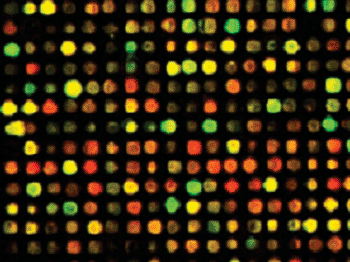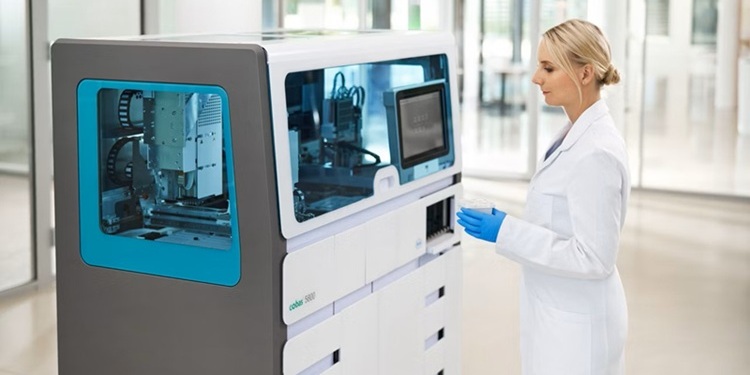Gene Expression Profiles Define Microbial Infection
By LabMedica International staff writers
Posted on 08 Aug 2013
A molecular test distinguishes between viral and bacterial infections in children with fever by profiling the activity of genes in a blood sample.Posted on 08 Aug 2013
In febrile children, it is difficult to know whether the child has a viral infection that will resolve on its own or a potentially serious bacterial infection that requires antibiotics.

Image: Microarray assay result (Photo courtesy of Ashley Vance).
Scientists at Washington University School of Medicine (St. Louis, MO, USA) can distinguish between viral and bacterial infections in children with fever by profiling the activity of genes in white blood cells. They studied 30 children ages two months to three years who had fevers above 38 °C, but no obvious signs of illness, like a cough or diarrhea. Twenty-two of the children were known to have viral infections based on previous extensive genomic testing that is not yet practical to use in a clinic setting, and eight others children had bacterial infections.
The investigators used a test called a gene expression microarray that could identify patterns of gene activity in white blood cells and could discriminate children with viral infections from those with bacterial infections. In addition to whole-blood and nasopharyngeal samples for virus specific polymerase chain reaction (PCR) and high-throughput sequencing, a blood sample was collected in a Tempus Blood Ribonucleic Acid (RNA) Tube (Applied Biosystems, Foster City, CA, USA; www.appliedbiosystems.com) and stored at -80 °C for subsequent gene expression analysis.
The microarray technology enabled the team to easily distinguish bacterial infections from viral infections based on distinctive patterns of gene expression. As a comparison, the scientists performed the microarray analysis on blood samples from 35 children without fever, also ages two months to three years, who were having outpatient surgery. Earlier genomic testing showed that eight of those children had viruses, even though they did not cause any symptoms.
Gregory A. Storch, MD, a professor of pediatrics and senior author of the study said, “In the kids with a virus and a fever, many genes were very active, compared with kids who had viruses and no fever, whose genes were quiet. The microarray basically tells us how a patient is reading the infection. The very active genes tell us that an infection is making a patient sick, while quiet genes tell us either there's no infection or maybe a bacterium or virus is there, but it's not causing fever or illness.” The potential benefit of using tests that measures the response of genes to get more conclusive answers to illness. This would help to ensure that antibiotics are targeted to those children who really need them. The study was published on July 15. 2013, in the Proceedings of the National Academy of Science of the United States of America (PNAS).
Related Links:
Washington University School of Medicine
Applied Biosystems














